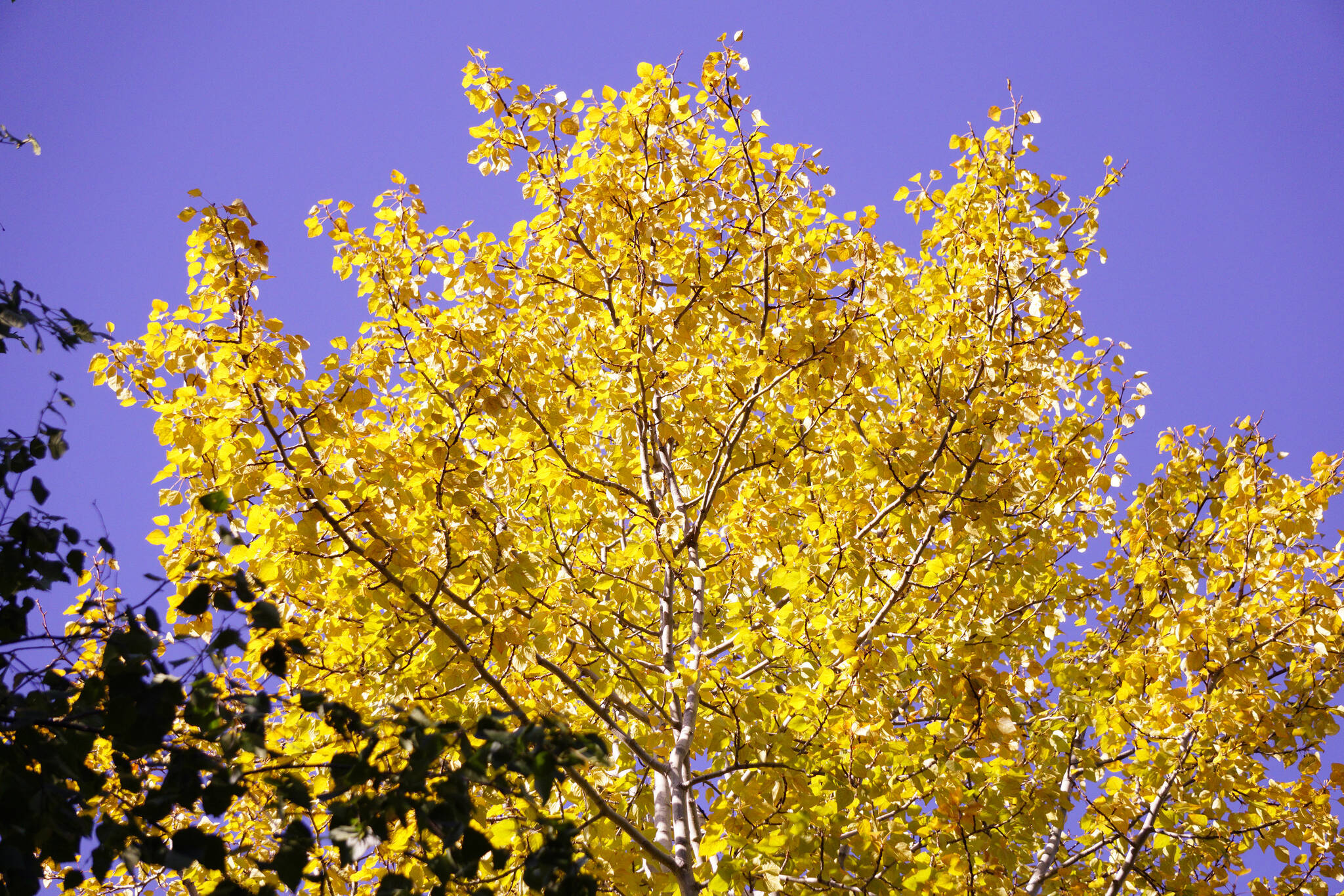On my mother’s side I come from a long line of New Englanders, the kind of people for whom fall leaf peeping can be something of a religion. New Englanders will tell you no place else on earth has more glorious foliage. They make a strong argument, but I am here to tell you that while Alaska’s colors might be subtle, oh my, can they ever be fabulous.
Often in September or October, I will take a trip back East to visit family. One year I visited my sister and my late mother in Keene, New Hampshire, for Pumpkin Fest. I stayed on that trip at my sister Janet’s home in rural Westmoreland, New Hampshire. I romped around the woods and collected all the colorful leaves I could find and pasted them on a page in a collage. That made a fine palette, from the reddish-purple of maple trees to the brilliant yellow of poplars. Points to New England. Yes, you do autumn right.
Alaska … Here’s the thing about Alaska. If you haven’t figured it out yet, we do scenery very large. Often that scenery can be monochromatic, mile after mile after mile of spruce forests. To find variety and color in Alaska, you have to look on the edges, where evergreens end and birch and aspen begin. You have to look into the undergrowth or up into the mountains for the fireweed and berry bushes.
My wife Jenny and I got a taste of that recently on a camping trip into the Kenai National Wildlife Refuge. For the past few years we have closed out our summer camping season in one of the great campgrounds of the peninsula. On that long drive north of Sterling heading into the Kenai Mountains, you pass through miles of birch forest dotted with black spruce trees and aspen. That scenery changed with the Swan Lake Fire. Pockets of birch and aspen survived while thousands of acres of spruce became transformed into sticks of charred trees like black pipecleaners.
Something miraculous has begun to happen, though. Patches of green bushes and small trees have grown to dot the understory of the forest, and everywhere fireweed blooms. As we drove up earlier this month, the fireweed had gone to fluff and the leaves turned a brilliant reddish-purple. Where a New England forest might have towering maples, we get hillsides of fireweeds.
On our recent trip, we camped at Hidden Lake Campground, a gem of a campground on the Skilak Lake Road. The Swan Lake Fire crossed the Skilak Lake Road down to the lake, opening up vistas. Birch trees turning yellow offered more contrast against the scorched earth. I discovered a new bit of color, though: the soft reddish-pink of mutant aspen trees.
Most aspen tree leaves turn yellow, but along the Skilak Lake Road and in the Hidden Lake Campground, I found a few patches of red aspens, a phenomena science writer Ned Rozell of the University of Alaska Geophysical Institute said could be a genetic trait, like red hair.
We found a camping spot down by Hidden Lake, parking our 1993 VW camper, Gerty, in a quiet little circle. Bonus: with the summer season over, camping was free. We popped the top and got set up and then took a stroll around the campground. Hidden Lake has a nice little trail that passes by a slough of the lake and then along the shore. In New England, the leaf peepers motor down country lanes. In Alaska, to better appreciate the fall colors, you have to get out and hike.
Here’s where Alaska fall colors get glorious. Along the lake and in little patches currant and other berry bushes pop up, rivalling maple trees with their intense reds.
On almost every trip to Skilak Lake and the refuge I’ve seen bears. As a warning to be on the alert, on that trail I found not one, but two big patches of bear poop spotted with brilliant red currant berries. Yeah, you can even get fall colors in bear poop. We saw more of those red aspens, some yellow birch along the lake and one big glorious yellow birch tree towering over the campground.
Our little camper doesn’t have a stove, so we cook with our portable stove on the picnic table, a nice compromise. You have a soft bed in the camper, but you still can appreciate the outdoors. On the Friday we arrived, a rain earlier that day left the table wet and we ate inside the van on our pullout table. Here, Ranger Jane, we made a mistake.
For dinner we’d made taco salad, with taco meat cooked in a pot on a stove and then spread over salad. We left the picnic table a bit of a mess: pot of meat on the stove, dishes and cutting board still out. Our dog Fletcher laid next to Jenny on the van’s bench seat. I sat in the jump seat looking out at the lake, the picnic table and, uh oh, a big black furry thing strolling toward the pot of taco meat on the stove.
A black bear, of course. We try to keep a tidy camp, only that night we postponed clean up until after we ate. That attracted a bear. Bears should not learn to associate campsites with food because that does not end well for the bear — or people. I leapt up, slid the van door open and yelled at the bear to go away. Fortunately, it did. Lesson learned: clean up your kitchen as you cook and don’t leave any temptations outside.
So add that color to Alaska fall camping, the glossy black of a bear poking its snout into your kitchen. Here in Alaska when we look for fall beauty, the colors will be subtle, sometimes hidden and occasionally on foot.
Reach Michael Armstrong at marmstrong@homernews.com.


